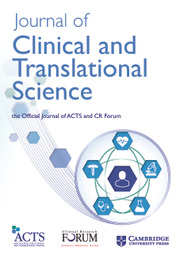No CrossRef data available.
Article contents
126 Characterizing raciolinguistic differences in emotion recognition for post-stroke assessment
Published online by Cambridge University Press: 11 April 2025
Abstract
Objectives/Goals: To create raciolinguistically sensitive emotion recognition assessment materials, we will (i) identify the prosodic cues that signal differences between raciolects (Black vs. White American English) and (ii) identify the prosodic cues that signal different emotions (angry, happy, and sad). Methods/Study Population: Research evaluating prosodic differences between raciolects and emotions both implicate pitch. For example, Black speakers tend to produce speech lower in pitch, and sad speech tends to be narrower in pitch range. In our study, 50 Black and 50 White American healthy adults will hear manipulated recordings of Black and White speakers uttering pseudoword strings that vary by mean pitch and pitch range. In the race task, participants will choose whether the stimulus was produced by a Black or White speaker. In the emotion task, they will choose whether the stimulus sounded happy, angry, or sad. Linear mixed-effects models will be used to determine the pitch correlates for each emotion by race. Results/Anticipated Results: If mean pitch (high, low) and pitch range (wide, narrow) function as acoustic correlates for emotions but differ by race, we expect the following: first, members in each participant group (Black, White) will converge on correlates that differentiate emotions and race; and second, the emotion correlates will differ between groups. Preliminary results using stimuli from only White speakers suggest convergence across groups for emotions (angry: low mean pitch, happy: high mean pitch, and sad: narrow pitch range) but not race. Ongoing data collection including stimuli from White and Black speakers will be used to conduct planned comparisons as well as test same-race, different-race differences. Discussion/Significance of Impact: Characterizing the prosodic differences in emotion recognition between races helps us understand disparities in post-stroke aprosodia. Additionally, developing a linguistically informed strategy for assessing deficits between dialects can be readily implemented across diverse linguistic communities.
Information
- Type
- Contemporary Research Challenges
- Information
- Creative Commons
- This is an Open Access article, distributed under the terms of the Creative Commons Attribution-NonCommercial-NoDerivatives licence (https://creativecommons.org/licenses/by-nc-nd/4.0/), which permits non-commercial re-use, distribution, and reproduction in any medium, provided the original work is unaltered and is properly cited. The written permission of Cambridge University Press must be obtained for commercial re-use or in order to create a derivative work.
- Copyright
- © The Author(s), 2025. The Association for Clinical and Translational Science

